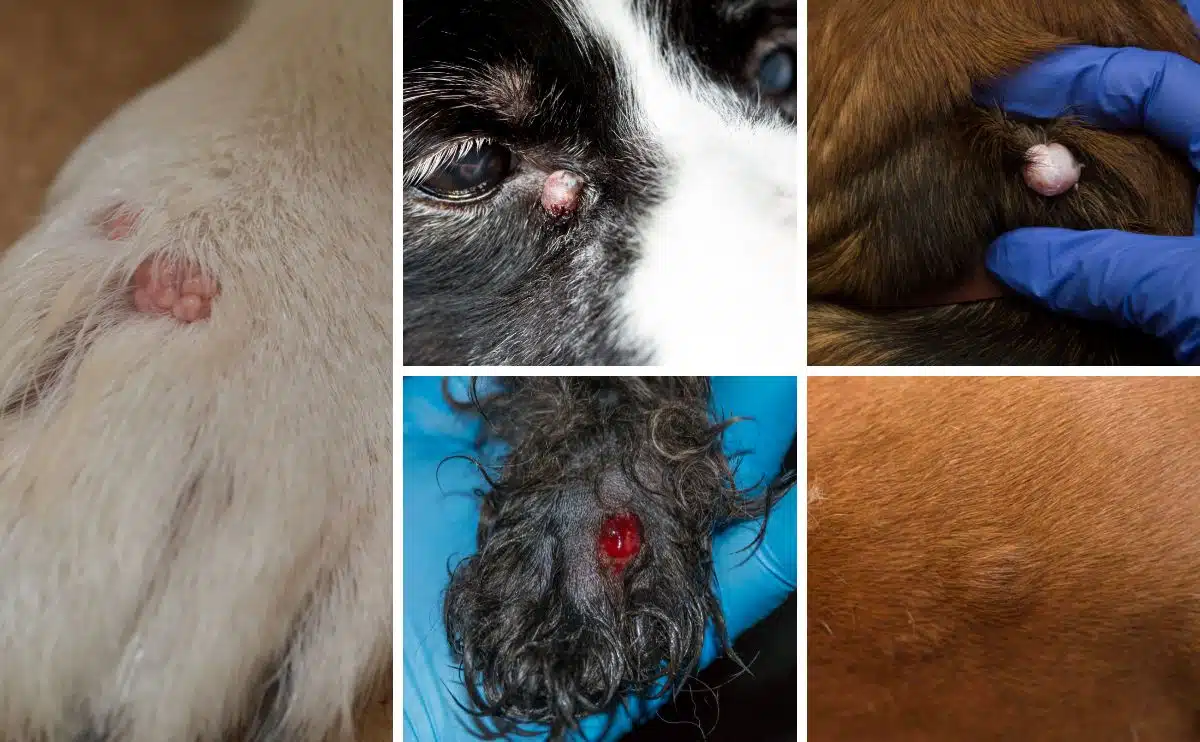
To keep the lights on, we receive affiliate commissions via some of our links. Our review process.
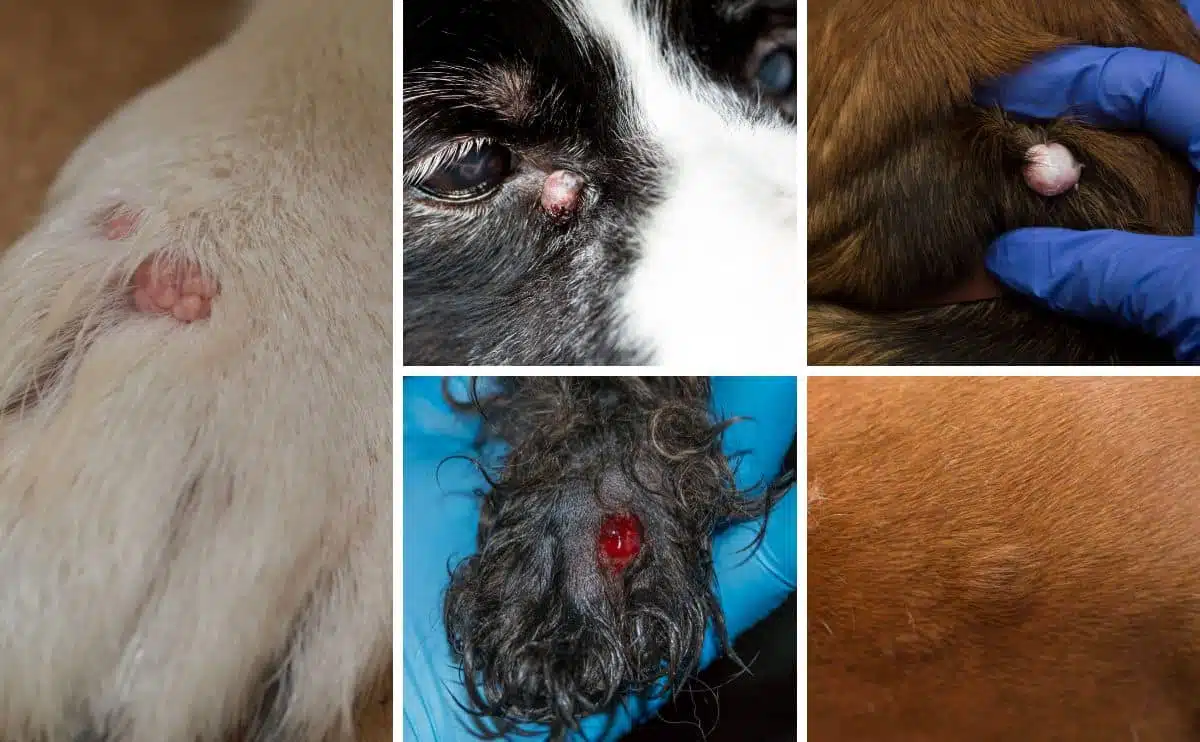
As dogs get older, they’re more likely to get some lumps and bumps. Some of these may be cysts, although there are lots of different types of lumps that dogs can get. Benign lumps include cysts and lipomas (fatty lumps), while other lumps can be cancerous. But how can you tell if your dog has a cyst? What types of cysts do dogs get? And what can be done about them? We’ll cover everything in this article, but if you’re still in doubt, speak to your veterinarian for reassurance.
What Does A Cyst Look Like On A Dog?
Contents
A cyst on a dog is usually within the skin layer, meaning you can easily lift it with the skin, and it’s not attached to any of the deeper tissues like muscles or fat. It’s often spherical or rounded in shape, and the size can vary from a pea to a marble or even bigger.
If it’s close to the surface of the skin, or if it’s become traumatized or previously ruptured, it may have a visible ‘head’ or scab on it.
If you think your dog has a cyst, though, it’s always best to double-check with a vet. This is because lumps can be very variable in appearance, and it’s impossible to be completely sure of the diagnosis without veterinary input, which might include a quick needle biopsy.
Why Do Dogs Get Cysts?
Dogs usually get cysts because a hair follicle becomes clogged with debris and fills with a combination of dirt and the waxes and oils that keep the skin barrier intact. This is known as a follicular cyst.
A sebaceous cyst, on the other hand, is when the sebaceous glands in the skin that produce these waxes and oils (known as sebum) become blocked and fill up gradually.
Allergies and foreign objects (like thorns) can sometimes lead to cyst development, especially interdigital cysts on a dog’s paws.
A cyst may also refer to a lump that contains fluid, and this can be anywhere on the body. Sometimes there’s no obvious reason for the development of these cysts, in the same way, that your dog could develop other types of growths.
What Are The Types Of Cysts In Dogs?
Sebaceous Cyst
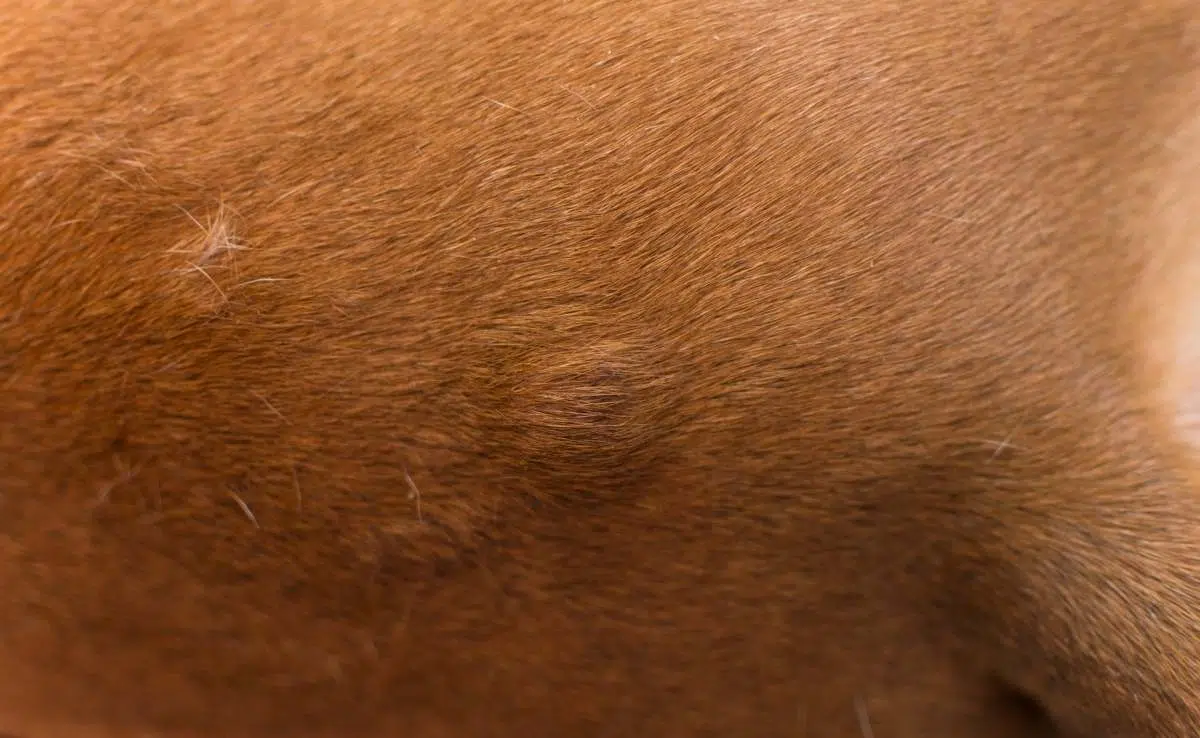
A sebaceous cyst on dogs looks like a round lump deeper in the skin layers. It doesn’t usually have a head but may rupture, especially if it becomes infected.
Follicular Cyst
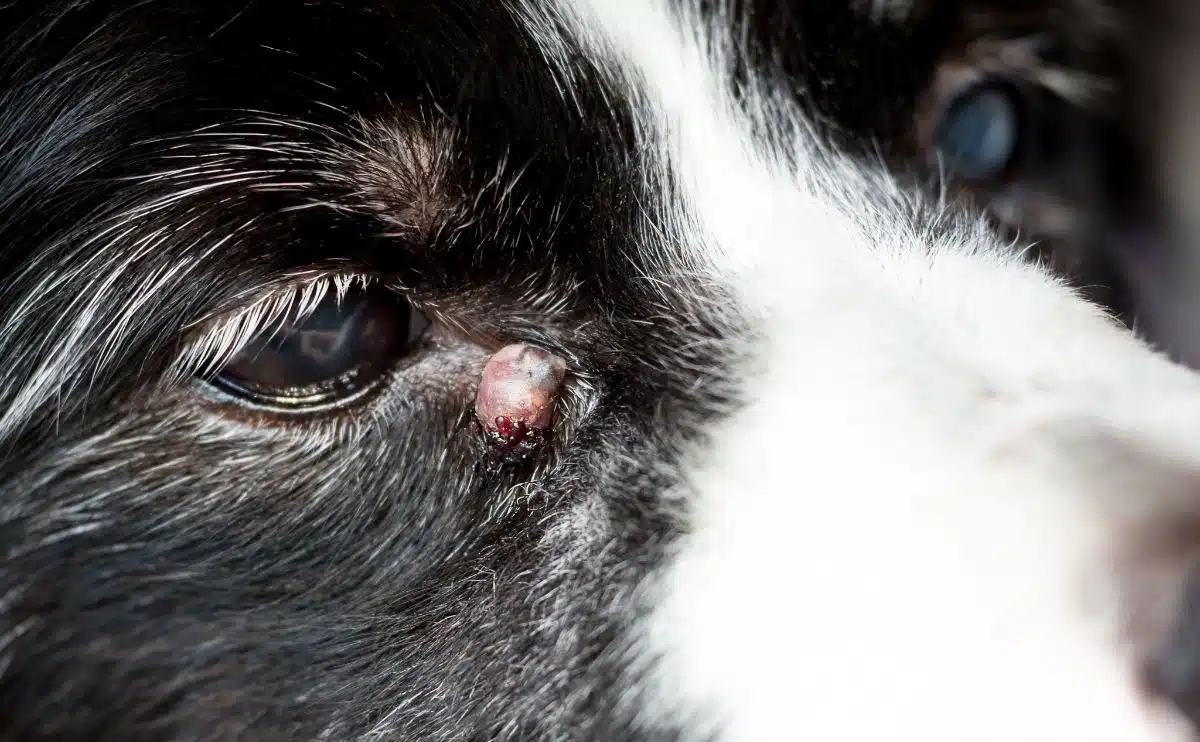
A follicular cyst on dogs is more likely to have a visible head full of pale yellow, cheesy material. It could be tempting to squeeze the cyst if it has a head, but it’s best to leave it alone in case you cause your dog pain or an infection.
Interdigital Cyst
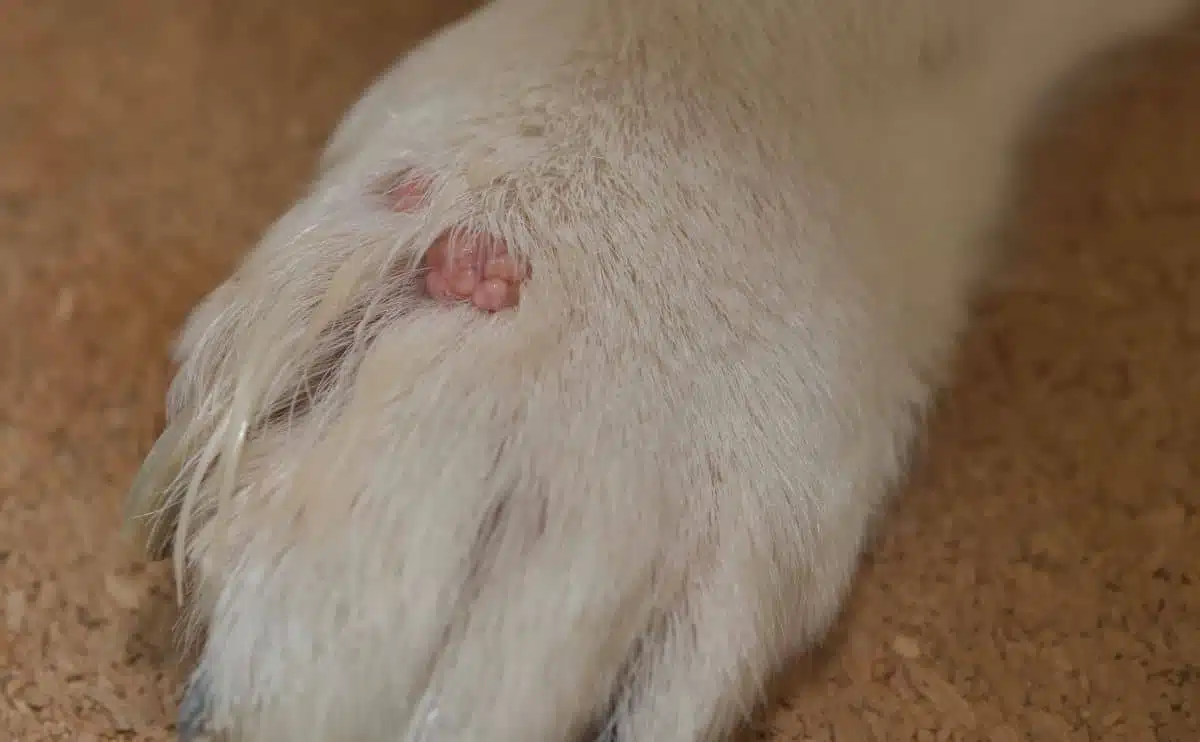
An interdigital cyst, as the name suggests, occurs between the toes. Certain breeds are susceptible to these, especially bulldog breeds and Labradors. The underlying cause is usually allergies, but they can also be triggered by foreign material like grass seeds, splinters, or thorns.
Fatty Cysts On Dogs
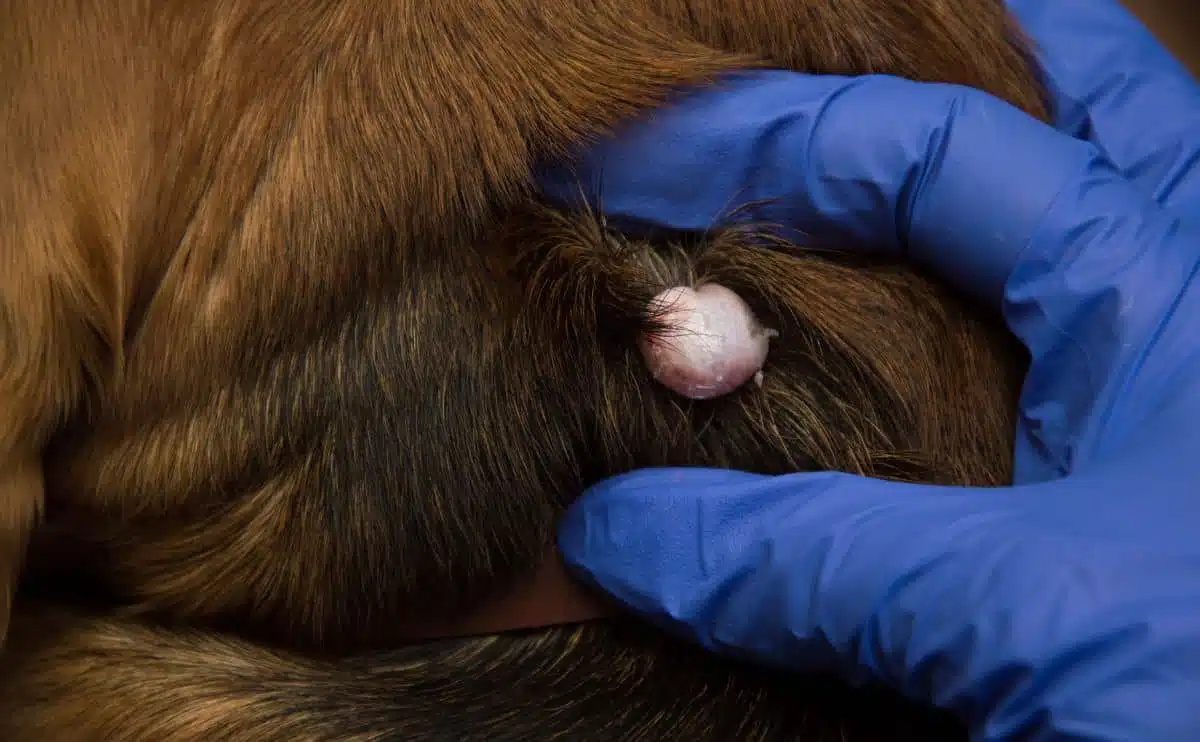
Although fatty lumps (known as lipomas) are usually benign, they’re not actually cysts. A cyst refers to a capsule of tissue surrounding fluid or gel-like contents, whereas a lipoma is truly a lump made of fat. This is usually under the skin, in the subcutaneous tissue. However, it is possible to have fatty lumps between muscle layers or even infiltrate into the skin or muscle.
Infected Cyst
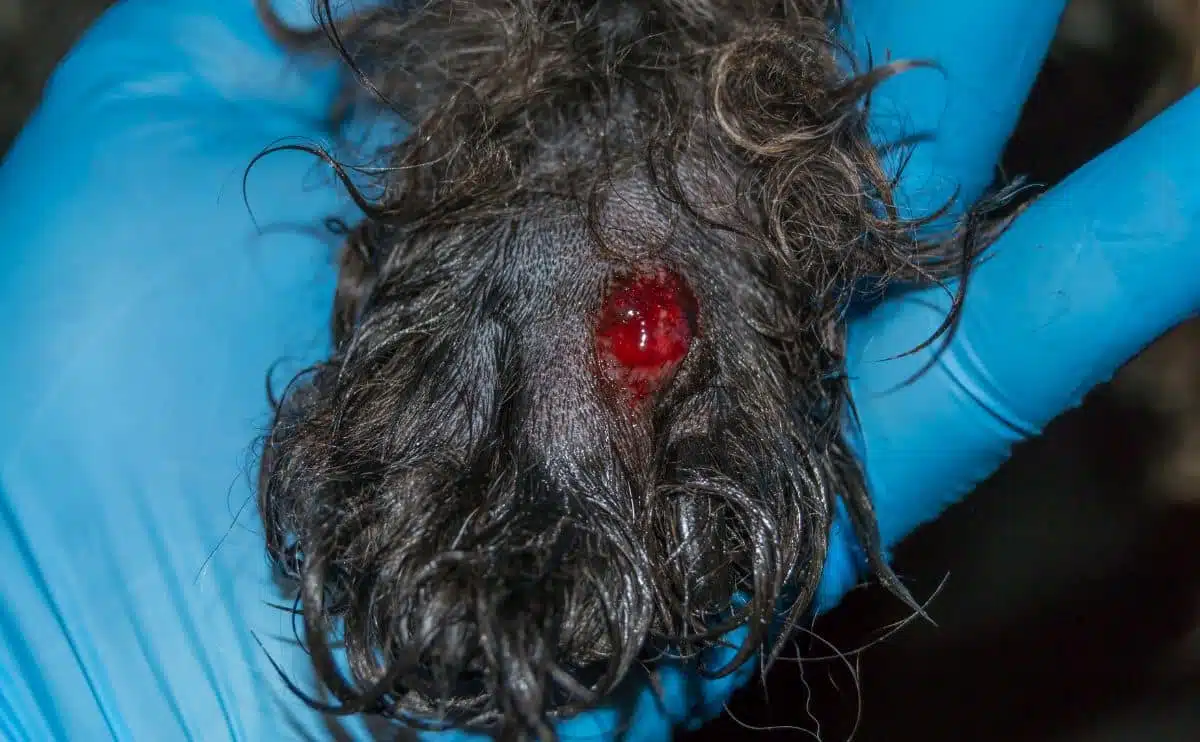
An infected cyst on dogs can be very painful. You might spot that the skin around the cyst is red, inflamed, or sore, and your dog might seem bothered by it. They might lick, chew, or scratch at the cyst, and it may bleed or ooze.
Where Do Dogs Get Cysts?
A dog can get a cyst in most places throughout the body. However, most are within the skin layer. Certain types of cysts are common in specific areas. For instance, you’d find an interdigital cyst on the paw and a meibomian gland cyst on the eye. Certain cyst locations on a dog are trickier to manage. For instance, a cyst on a tail can’t be so easily removed due to the lack of available skin to close the wound.
How To Treat A Ruptured Cyst On A Dog
If your dog has a cyst that has ruptured, it’s really important to keep it clean. You can bathe the area with salt water or diluted chlorhexidine solution, and you should try to stop your dog from licking it or scratching it. If your veterinarian has previously diagnosed the cyst, and it has ruptured before, it might be appropriate for you to continue keeping it clean and protecting it until it heals.
However, if the lump has never been seen by a veterinarian, or if this is the first time it has ruptured, it’s crucial to get your vet’s advice. If there is an infection, your vet will prescribe antibiotics, and if the inflammation is severe or your dog is in pain, they will give anti-inflammatory medication too. Sadly, although medication will often settle a ruptured cyst, it won’t take it away. If a cyst ruptures repeatedly or is bothering your dog, the veterinarian may recommend surgery to remove it.
Is There A Cyst On Dog Home Remedy?
If your dog has a cyst, you should always seek veterinary advice in the first instance. They’ll be able to confirm the diagnosis and prescribe any treatment required. If needed, they may drain the cyst, but it’s very likely to refill over time. If your dog has a longstanding cyst and your veterinarian is aware of it, they might suggest you keep it clean with salt water when it bleeds or becomes oozy and sore. This can sometimes help the cyst settle, but if it happens regularly, the cyst might need to be removed.
How To Drain A Cyst On A Dog
You might be tempted to give your dog’s cyst a gentle squeeze or stick a needle into it. However, this isn’t a good idea and can cause infection or inflammation. You might even accidentally force the cyst contents deeper into the skin, which could make things worse. If you think your dog’s cyst needs to be drained, book an appointment with your veterinarian. They will discuss the risks and benefits of draining the cyst or surgically removing it so that you can make an informed decision.
Other Types Of Lumps & Bumps
It’s always a worry if you find a lump on your dog that you haven’t noticed before. If you’re concerned that your dog has a lump, make a note of when you spotted it, whether it’s grown, and whether it’s bothering your dog. Then book an appointment with your veterinarian so that they can take a look. Once a diagnosis has been made, your vet can guide you on how best to proceed so that you can stop worrying and enjoy time with your canine companion. Learn more about tumors on dogs and other types of lumps on dogs including skin conditions like pimples.
Tagged With: